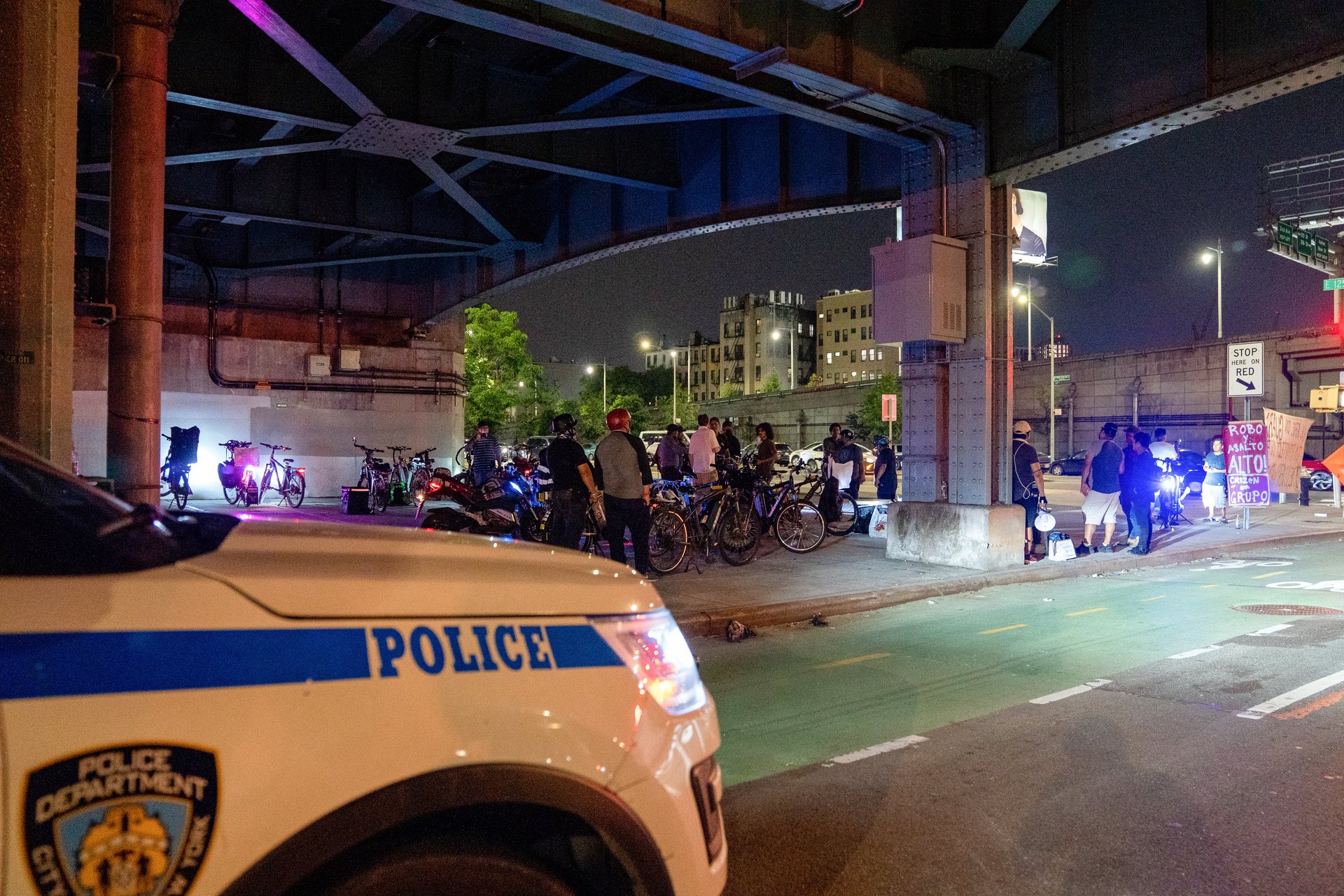The biggest cities in the US didn’t send any hate crime data to the FBI in 2021
The number of crimes are not lower—it’s crime reporting that has fallen

Hate crime incidents decreased between 2020 and 2021, official data show.
Suggested Reading
In its report, the Federal Bureau of Investigation (FBI) found that over 7,300 hate crimes were committed in 2021. The year before, there were more than 8,000.
Related Content
This apparent decrease is not a cause for celebration. The number of crimes are not lower—it’s crime reporting that has fallen. In 2021, just 65% of agencies reported hate crimes versus 93% the previous year.
Starting Jan. 1, 2021, the FBI retired its traditional Summary Reporting System (SRS)—an aggregate monthly tally of crimes—to introduce the National Incident-Based Reporting System (NIBRS). The new system requires authorities to get much more granular, including information on victims, known offenders, relationships between victims and offenders, arrestees, and property involved in crimes.
But while the quality of the data may be enhanced, its quantity fell.
“While a large number of contributors were successful in making the transition to NIBRS, many others faced challenges and were unable to modify their systems to begin submitting NIBRS data to meet the required cut-off date of March 14, 2022, for inclusion in the Hate Crime Statistics, 2021, release,” the FBI acknowledged.
Charted: Hate crime reporting is down
Missing cities in FBI’s hate crime data: New York, LA, Miami
The two largest cities in the US—New York and Los Angeles—did not submit any data. Neither did Miami. These omissions are concerning given that New York and California have typically contributed to the highest number of hate crimes.
Meanwhile, others like Chicago, Illinois, and Phoenix, Arizona, reported zero hate crimes, which seems implausible.
“Hate crimes tear at the fabric of our society and traumatize entire communities,” Jonathan Greenblatt, CEO of the Anti-Defamation League(ADL), said in a Dec. 12 statement. “The failure by major states and cities across the country to report hate crime data essentially—and inexcusably—erases the lived experience of marginalized communities across the country.”
“The data need not be perfect,” Brian Levin, director of the Center for the Study of Hate and Extremism at Cal State San Bernardino, told LA Times. “But when it is this incomplete, it becomes an obstacle, because the average American will look at it and say, ‘Oh, OK, hate crimes are down.”
Greenblatt is urging Congress to make it mandatory for state and local law enforcement agencies that receive federal funding to participate in the FBI’s hate crime data collection efforts. Meanwhile, Levin has called for the FBI to amend the report to include more major cities.
Why is the FBI’s hate crime data incomplete?
While NIBRS complicating things has had the biggest impact, there’s also other facets to this reporting system that can create gaps.
For one, reporting isn’t compulsory for anyone but federal law enforcement. “Agencies participate voluntarily and submit their crime data either through a state UCR program or directly to the FBI’s UCR Program,” the FBI states.
Secondly, victims don’t always report hate crimes.
Plus, hate crimes may go under the radar since there’s no objective criteria to define them. Broadly, these crimes are motivated by the offender’s bias against a race, gender, gender identity, religion, disability, sexual orientation, or ethnicity, but motivation is subjective.
“The presence of bias alone does not necessarily mean that a crime can be considered a hate crime,” the federal agency explains. “Only when a law enforcement investigation reveals sufficient evidence to lead a reasonable and prudent person to conclude that the offender’s actions were motivated, in whole or in part, by their bias, should an agency report an incident as a hate crime.”
The Justice department is trying to get reporting up
“No one in this country should be forced to live their life in fear of being attacked because of what they look like, whom they love, or where they worship. The department will continue to use all of the tools and resources at our disposal to stand up to bias-motivated violence in our communities.” —Associate Attorney General Vanita Gupta’s statement
Hate crime reporting in the US, by the digits
18,812: City, university and college, county, state, tribal, and federal law enforcement agencies in 2021 that could have reported statistics under the Uniform Crime Reporting (UCR) Program
11,883: Law enforcement agencies that did report their information to NIBRS as of Jun 1, 2022
64.8%: Victims were targeted because of their race and ethnicity in 2021
15.6%: Victims targeted because their sexual orientation in 2021
13.3%: Victims targeted because of their religion in 2021
5: Bias motivations per offense type that a law enforcement agency can report
$120 million: Grants the justice department has allocated since 2016 to assist law enforcement agencies transition to NIBRS
24: Languages the department of justice allows people to report hate crime in
94: All US Attorneys’ Offices will host a United Against Hate program to improve reporting by helping community members prevent, identify, and report hate crimes, and build trust between them and law enforcement, the justice department announced in September
What is the point of collecting hate crime data?
The statistics are an asset to several strategists, including criminologists, policymakers and historians, among others. According to the FBI, these annual figures
- help law enforcement address issues for their communities
- provide lawmakers with justification for certain legislation
- supply the media with credible information
- show hate crime victims that they are not alone
- help researchers in determining trends in hate crimes